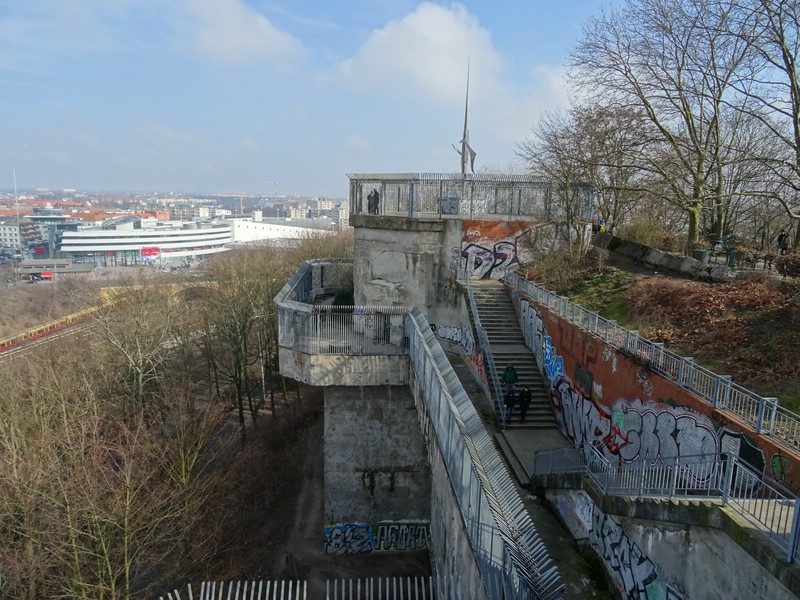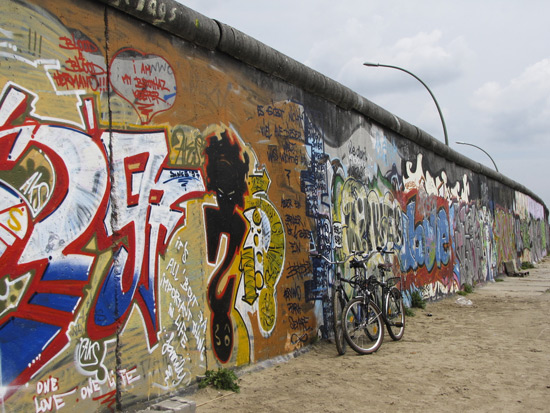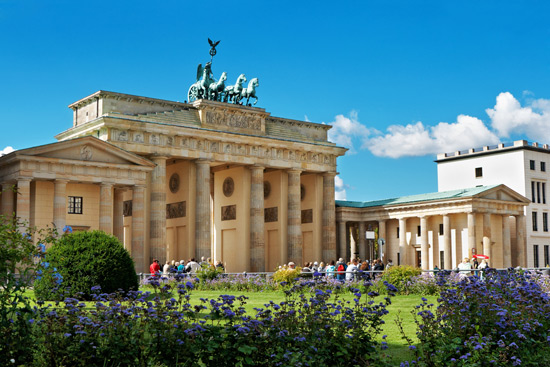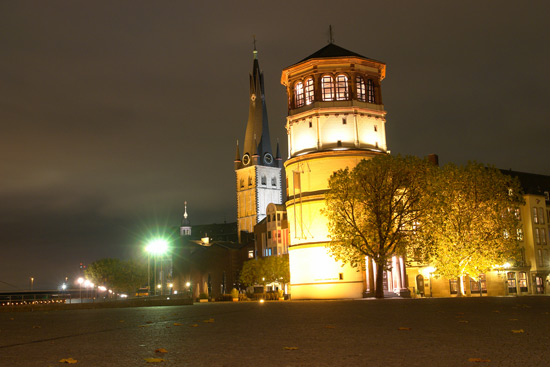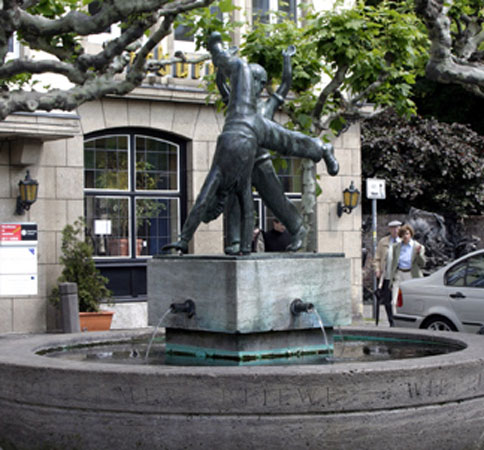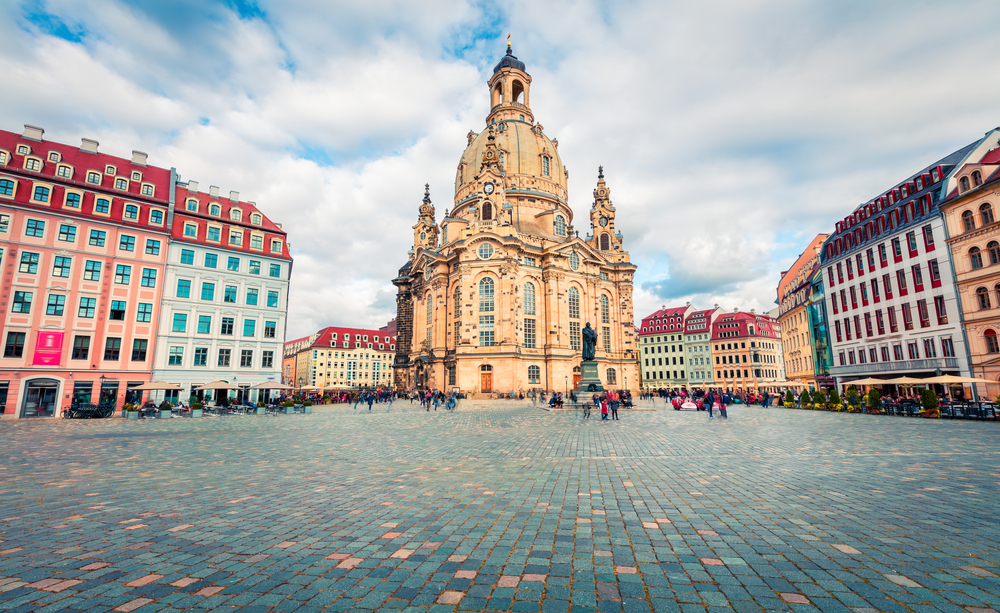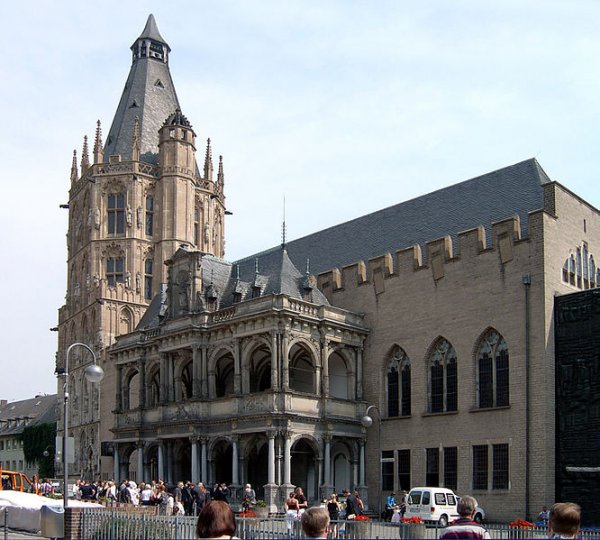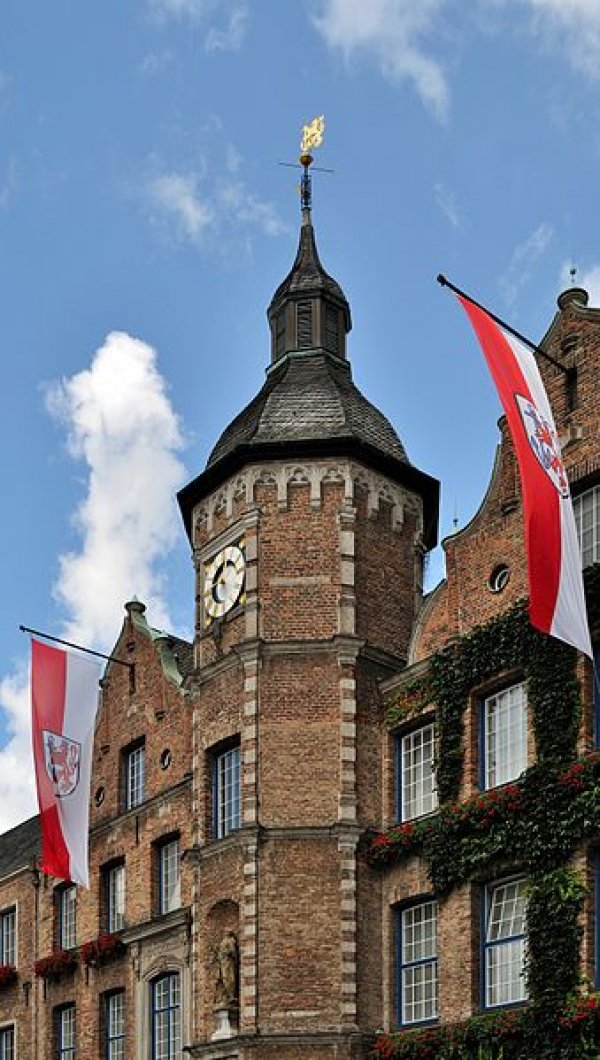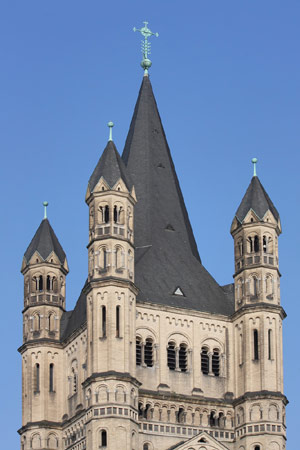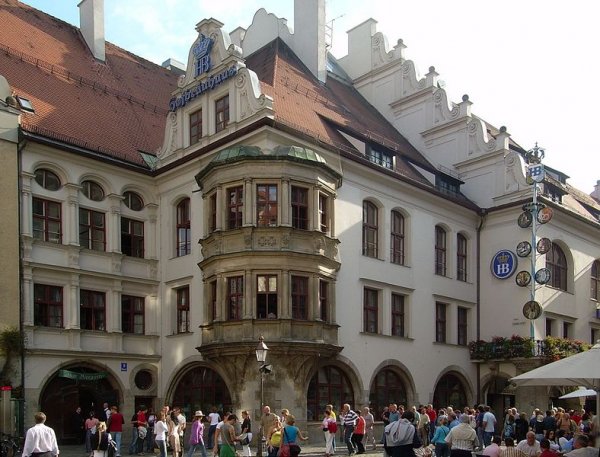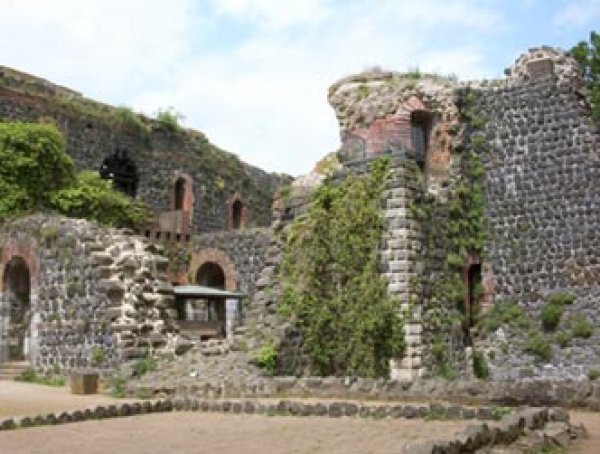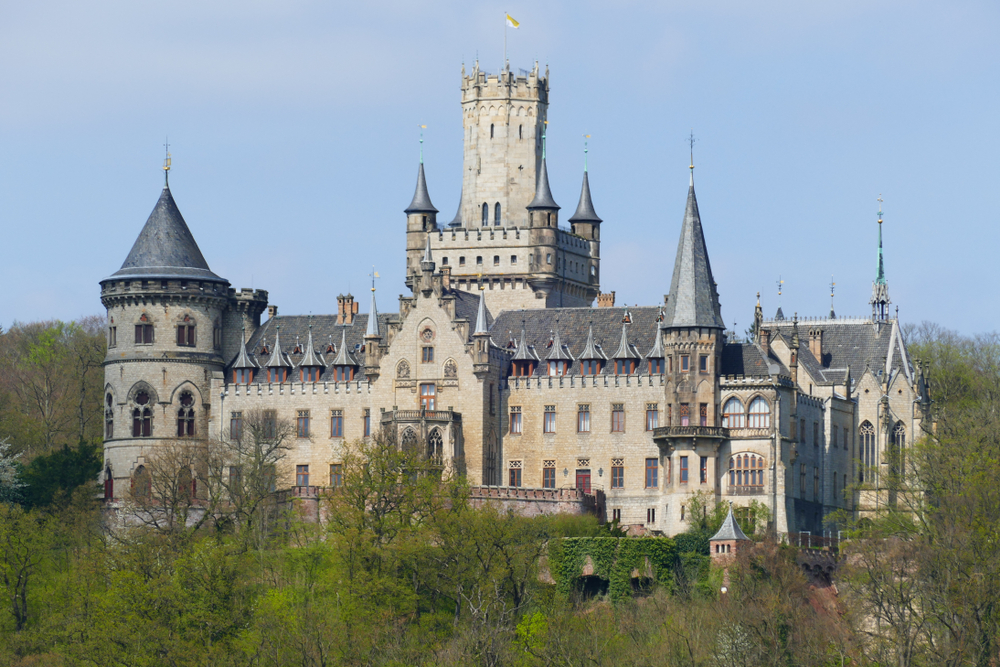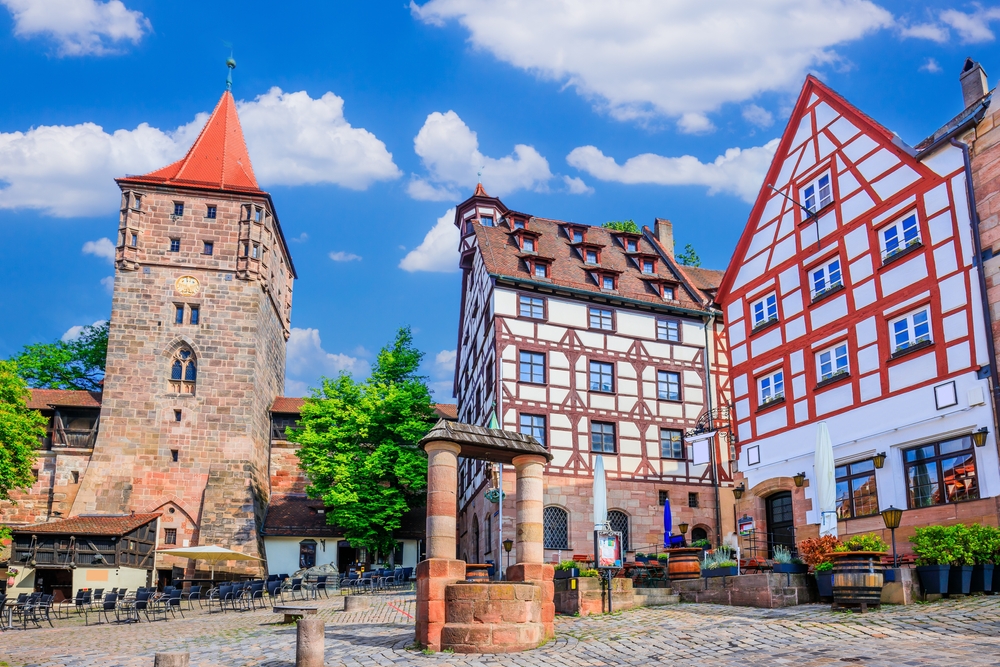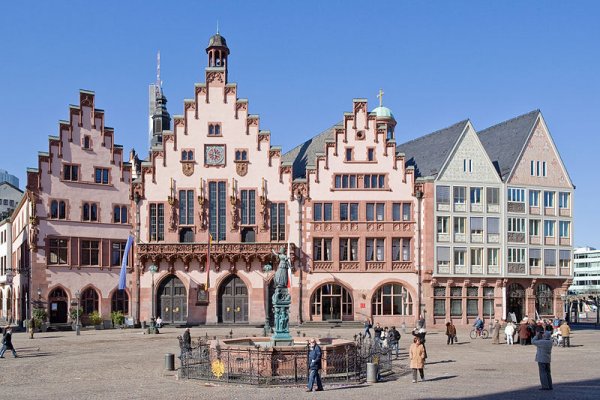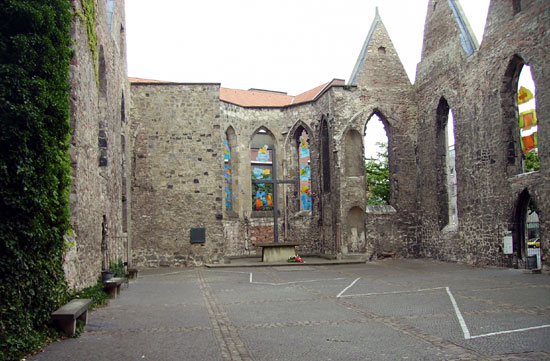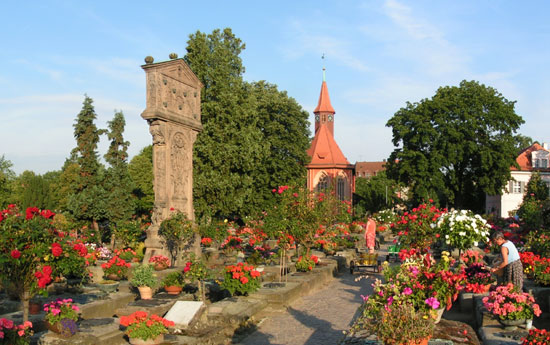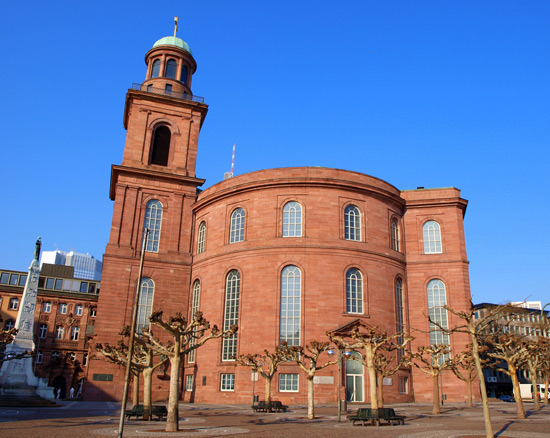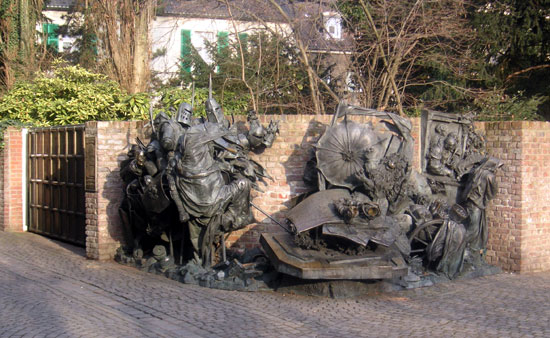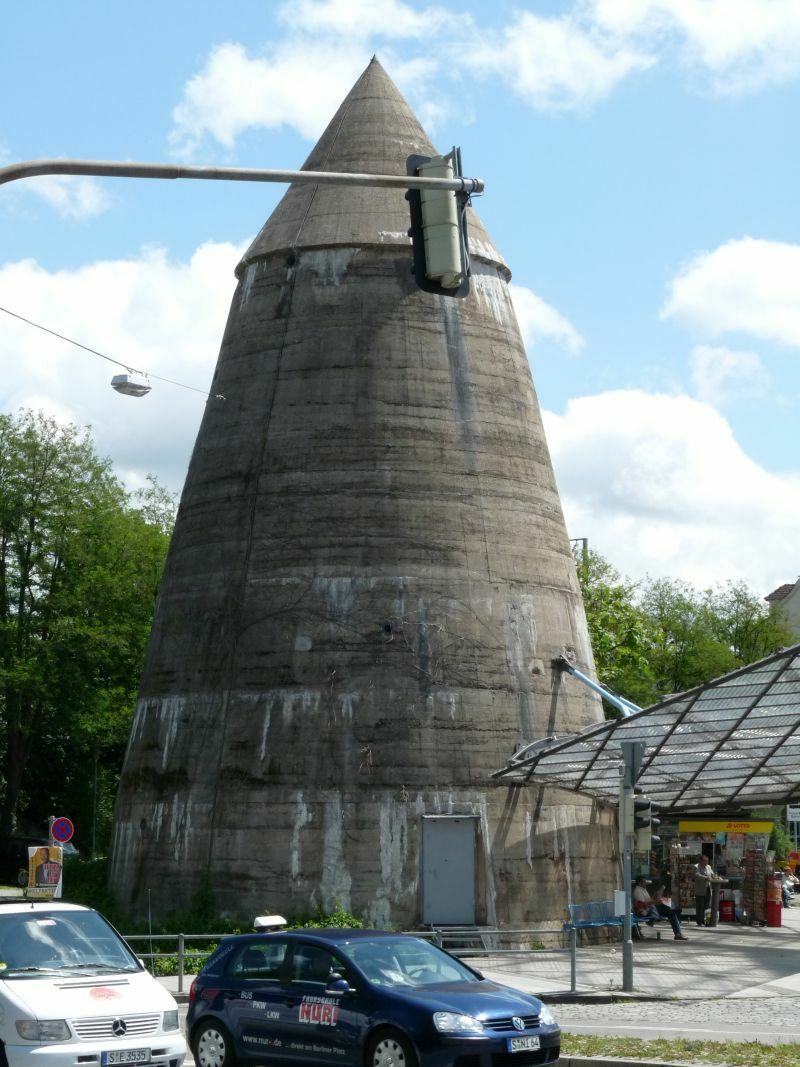Points of Interest
Berlin Underworld Association Tours
Brunnenstraße 105
Berlin, Germany
Explore parts of Berlin that recall the city’s World War II history and Cold War aftermath. Guided tours are offered in German, English, and other languages, offering insight into the city’s secret side that arose primarily during the years of WWII, 1939–1945. Visit an air-raid shelter complex, bunkers, and nuclear fallout shelter through one of several tours. See a glow-in-the-dark room, fallout suits, diagram of a spy tunnel, and artifacts from the city’s sewer system. Learn about Berlin’s pneumatic-tube mail network and how people escaped from East to West Berlin through underground escape routes, provided by more than 70 tunnels built between 1961 and 1982. Visit Berlin Underworld Association’s website for more information and tour options.
Berlin Wall
Berliner Mauer
Berlin, Germany
In the summer of 1961, the communist government of the eastern regime erected a wall through the middle of the city of Berlin in an effort to prevent its eastern denizens from fleeing to the West. The Wall's demolition in 1989 paved the way for German reunification and signified the end of communist rule across Europe. Today all that's left of the iconic wall, originally 160 kilometers (100 miles) long, are a few sections, preserved as a reminder of the 28-year division of the city. There are various places to view the remaining pieces of the Berlin Wall including Mauerpark (Wall Park) and Niederkirchnerstraße, where the wall is utilized in an open-air exhibit, The Topography of Terror. The longest existing section of the former divide is the 1.3-km (1-mi) stretch along Mühlenstraße in Friedrichshain better known as the Eastside Gallery.
Brandenburg Gate
Brandenburger Tor
Pariser Platz
Berlin 10117, Germany
The 26-meter (85-foot) neoclassic sandstone gateway to Berlin city was completed in 1791. The Doric columns on each side form passages for traffic, while the wider central passage is modeled on the Propylaea of the Acropolis in Athens. The Brandenburg Gate has historical significance as the only remaining gate of a series through which one formerly entered Berlin. The gate is crowned by a statue of Victoria, the goddess of victory, riding a chariot into the city. Under Nazi rule, the gate served as a symbol of the Third Reich's power. Walled off from east and west during the Cold War, the gate has become, since 1989, a powerful symbol of freedom and unity in the country.
Burgplatz
Düsseldorf Germany
The mighty castle of the dukes who ruled Düsseldorf stood at this place. Nowadays, a lonely tower is all that remains. Since the opening of the Rhine embankment tunnel in 1995, Burgplatz—awarded a prize as one of the most beautiful squares of post-war Germany—is again situated directly on the Rhine. The old castle tower houses the Schiffahrt Museum (Shipping Museum), which provides details on 2000 years of navigation on the Rhine.
Cartwheel Fountain
Burgplatz Altstadt
Düsseldorf, Germany
Like the Jan-Wellem-Reiterstandbild and Stadterhebungsmonument, this fountain is an indelible piece of the city's history and culture and should feature high on your sights-to-see list. The story goes that after the Düsseldorfers chased the Archbishop across the river in 1288, all the children of the city did cartwheels to celebrate the great victory, as well as the return of most of the men who went off to war. Since then, the cartwheel has become a symbol of Düsseldorfer pride.
Castle Square
Schlossplatz
Stuttgart, Germany
European squares don't come much bigger or better. The point of access to most of Stuttgart's premier tourist attractions, Schloßplatz is a happening venue in its own right, hosting the world-renowned Weihnachtsmarkt every December, outdoor concerts, children's festivals, and garden shows. The square is bookended by the jaw-dropping façades of the Altes Schloss and Neues Schloss and the Mercury Pillar, completed in 1958, is located in its northern sector. Although the square is incredibly historic, a contemporary feel has been achieved thanks to several tasteful renovations over the last 30 years. Anyone riding a night bus or one of the underground train services is likely to pass through Schloßplatz, for it is also a major transport hub.
Cathedral Church of Our Lady
Frauenkirche
12 Frauenplatz
Munich 80331, Germany
The Catholic cathedral of Frauenkirche, the largest church in the Bavarian capital of Munich, can hold a congregation of 20,000 people. The red brick, late Gothic-style cathedral, built between 1468 and 1488 to replace an older church, was consecrated in 1494. The domes atop its two towers are modeled on the Dome of the Rock in Jerusalem and were added in 1525. The interiors include a collection of 14th to 18th century art works by noted artists, stained-glass windows, and the tomb of Emperor Louis IV. A number of legends surrounding the Devil's Footstep have grown around the black mark resembling a footprint with a small hooked tail at the heel at the entrance to the cathedral.
Checkpoint Charlie
Friedrichstraße 43-45
Berlin 10117, Germany
Checkpoint Charlie, the most visible Berlin-Wall crossing point during the Cold War and one of its most potent symbols, is the city's foremost tourist attraction. The original wooden guardhouse, which the Western Allies called Checkpoint C, has been replaced by a replica. The original is in the Allied Musuem in Zehlendorf. An open-air exhibit focuses on checkpoint expansion, escape attempts and other acts of bravery, and the legendary standoff between Soviet and American tanks. Memorials to those who lost their lives during crossing attempts mingle with a proliferation of souvenir shops. Near the guardhouse, the Haus am Check Point Charlie (Check Point Charlie House) displays additional artifacts and information related to the era.
City Hall of Cologne
Rathausplatz
Cologne, Germany
The history of Cologne's City Hall mirrors that of the city, with various alterations and extensions expanding the original administrative site. This location dates back as far as the Roman era-this was where the Praetorium was situated—but that's only one piece of the archaeological jigsaw. The Rathaus incorporates elements of the old 12th-century Jewish neighborhood, the 14th-century Hanseatic Hall, the 15th-century Löwenhof (Lion Court) celebrating the independence of the medieval craft guilds, and a Spanish section constructed to mark a 17th-century Iberian alliance. The Jewish links are emphasized by a glass pyramid beside the Rathaus, which contains a traditional mikwe (bath). Amid the earnest architectural styles, a little chaos sneaks into the hall. Keep an eye out, while you're admiring the dozens of statues that decorate the external wall, for a couple of renegade carvings—two of the supposed worthies are pulling a full moon.
City Hall of Düsseldorf
Rathaus
Marktplatz 1 Altstadt
Düsseldorf, Germany
As in most German cities, Düsseldorf's Rathaus (Town Hall) fronts a plaza that often hosts the yearly Christkindlmarkt and other seasonal events. Düsseldorf's Rathaus consists of three attached buildings from different periods: the so-called "old town hall" at the northern side of Marktplatz, the Wilhelminischer Bau, and the Grupello Haus at the western side. Restaurants line the plaza, and a fountain in its center offers a great photo opportunity.
Cologne Cathedral
4 Domkloster
Cologne, Germany
The sheer magnitude and distinctive Gothic features of Cologne Cathedral are truly impressive. Dedicated to St. Peter and the Virgin Mary, the architectural wonder was completed in the late 19th century. It is Cologne's most famous landmark and the second-tallest Gothic structure in the world with two towers rising 157 meters (515 feet). The cathedral boasts the largest free-swinging bell in the world, St. Petersglocke (Bell of St. Peter), which weighs nearly 22 metric tons (24 tons). The cathedral's other treasures include the gilded 13th-century Sarcophagus of the Magi, largest reliquary (container for relics) in the Western world, Gero-Kreuz (the oldest cross north of the Alps), and Milan Madonna (Mailänder Madonna), a wooden sculpture dating to 1290.
Great St. Martin
Gross St. Martin
Martinspförtchen 8
Cologne, Germany
Famous for its trefoil (cloverleaf) choir, this massive Romanesque church south of the cathedral has been completely rebuilt since 1948. During World War II, it was gutted by British bombing raids, its tower destroyed, and its walls reduced to ruins. Over nearly 40 years, the city painstakingly restored Great St. Martin—it opened to worshipers once again in 1985. Originally consecrated in 1172, not long after a fire destroyed much of Cologne, the church was built upon the foundations of old Roman harbor warehouses (as well as on those of a 10th-century Benedictine cloister). Over the following three centuries, it was added to and extended, with towers and turrets. Although built mainly in the Romanesque style, Great St. Martin's verticality—its series of piled geometric forms reaching into the sky above the Altstadt—suggests the Gothic style, which was to become prevalent across Germany.
Hamburg's Free Port
Freihafen Hamburg
St. Pauli Landungsbrücken
Hamburg, Germany
These days, Freihafen is one of Hamburg's most popular attractions. It's is an essential part of Hamburg's history, responsible for the booming trade that launched the city into prosperity. The free port dates back to the 12th century, when Holy Roman Emperor Frederick I (Barbarossa) granted the city special trading privileges and customs exemptions. Today's Free Port is not in the same location as the original, which was situated where the Alster (now twin lakes but once a tributary) met the Elbe River. As Hamburg's trade expanded, the port was moved farther south. It required additional modifications in the late 1800s, when Hamburg joined the German Empire's Customs Union. At this time it was drastically restructured, with large blocks of residential renaissance and baroque homes removed to make way for additional storage facilities (today's Warehouse District). From the port, you can watch as enormous ships sail in and out, or you can head onto the waters yourself for a harbor cruise, view the impressive HafenCity and Warehouse districts, and explore the many local attractions at water's edge.
Heinrich Heine's Birthplace
Heinrich Heine Geburtsort
Bolkerstraße 53 Altstadt
Düsseldorf, Germany
Heinrich Heine (1797-1856), one of Germany's greatest poets, was a son of Düsseldorf and a contemporary of many of Europe's greatest writers, including Goethe. He was born in Bolkerstraße in the Altstadt. A literary café fronts the building. Here, readings of Heine's work and that of many others are mixed in with the literary work of some of Düsseldorf's modern poetry lovers.
Hofbräuhaus
Marienplatz Platzl 9
Munich, Germany
The popular Hofbräuhaus was founded in 1592 by the Duke of Bavaria, who was unhappy with the beer brewed in Munich at the time. It was distinguished from other breweries in the region by its brown ale. The beer was originally brewed in the historic beer hall on the first floor, which today seats up to 1,300 guests. Be sure to check out the beer stein safes. Here, past and current regulars store their favorite (often valuable) stoneware and glass mugs. Of course, there also is a beer garden in the back, with room for up to 400 guests.
Holocaust Memorial
Holocaust-Mahnmal
Cora-Berliner-Straße 1
Berlin 10117, Germany
To commemorate the 60th anniversary of the fall of the Nazi regime in May 2005, artist Peter Eisenman was commissioned to create what is officially known as the Memorial to the Murdered Jews of Europe. Eisenman's abstract design of 2,711 plain grey stelae of varying dimensions, staggered across 19,000 square meters (205,000 square feet), initially drew controversy but has quickly became a defining landmark for the city of Berlin. A walk through the memorial's seemingly endless monoliths is a thought-provoking exercise in disorientation and instability. A subterranean information center in the southeastern corner of the "Field of Stelae" provides background material, including facts and information about the victims of the Holocaust and other historical memorial sites throughout Germany and Europe.
Kaiserswerth
Düsseldorf, Germany
Once the stronghold of emperors, Kaiserswerth now stands in ruins invaded daily by hordes of tourists fascinated by Germany's medieval past. The imperial palace complex is accessible in summer. The idyllic Burgweg, with its unique, linden-lined avenue, affords a magnificent view of the palace throughout the year. Don't miss out on visiting Kaiserswerth's picturesque baroque houses from the 17th and 18th centuries and St. Suitbertus Basilica on Stiftsplatz, a triple-naved Romanesque pillar basilica with a gilded shrine holding the relics of Saint Suitbertus.
Leine Castle
Leineschloss
Hinrich-Wilhelm-Kopf-Platz 1
Hannover, Germany
Situated above the River Leine, this multifarious building has enjoyed several lives. In the 12th and 13th centuries, it was home to a Franciscan monastery, which did not survive the Protestant Reformation. In the 16th century, the Duke of Brunswick-Lüneberg chose the site as his base, building a castle to cement his grip on Lower Saxony. It was designed by a French architect, Remy de la Fosse, who was responsible for several 17th- and 18th-century castles across Europe. More than 100 years later, Georg Ludwig Friedrich Laves renovated the structure, adding the six-columned portico that visitors can see today. Though gutted by British bombers during World War II, the castle was restored from 1957 to 1962. Today, it remains one of the epicenters of Hannover's political power, as the home of the Niedersächsischer Landtag (Lower Saxony State Parliament).
Marienburg Castle
Marienburg 1
Pattensen, Germany
This picturesque castle, just 30 minutes from Hannover, is worth a visit for its classic fairytale appearance. There are several turrets, battlements, and towers, and any child who is a Harry Potter fan will feel like they’ve been transported to Hogwarts Castle. Wander through 30 furnished rooms or ascend the tower and see expansive views of the surrounding countryside from the viewing platform. Learn about the history of Marienburg Castle and those who built it. The castle grounds includes a cafe and shop, too. Tours are offered, including the Classical Castle Tour with guides attired in historical costumes.
Neuschwanstein Castle
Schloss Neuschwanstein
20 Neuschwansteinstraße Schwangau
Bavaria 87645, Germany
King of Bavaria Ludwig II built this 19th century castle in the picturesque setting of the Bavarian and Allgäu alps in homage to Richard Wagner. The idealist king conceived of the castle as a retreat, with every room reflecting the operatic world of Wagner's works, and so rebuilt the old castle ruins at Hohenschwangau using the authentic style of the old German knights' castles. Historians say that Ludwig's loss of authority to the Prussians led him to build a castle where he could still feel like a real king. Today, more than 1.3 million people visit the castle each year.
Nuremberg Castle
Tiergärtnertor Square
Auf der Burg 13
Nuremberg 90403, Germany
Part of the Holy Roman Empire, Nuremberg Castle is a group of medieval fortified buildings encircled by walls in the center of the city. Today, visitors to the site can tour the Double Chapel, climb Sinwell Tower, peer down into a 50-meter-deep (164-foot-deep) well, and explore the Imperial Castle Museum. By booking a room with DJH Youth Hostel Nuremberg, it’s even possible to sleep at the castle.
Nymphenburg Palace
Schloss Nymphenburg
Schloss Nymphenburg 1
80638 Munich, Germany
Nymphenburg Palace and its parks are one of Munich's best-known sights, and the magnificence of this once royal residence should make an impression on the whole family. Designed in 1664, the palace was expanded to include two pavilions and stables, an orangery (a greenhouse conservatory to cultivate oranges), and ring of baroque mansions. Of special note are the ceiling frescoes in the Stone Hall (Steinerner Saal) and original baroque decorations in the Gallery of Beauties. The museum in the stables houses the magnificent carriages and sleighs of King Ludwig II as well as a collection of Nymphenburg porcelain from the factory in the palace complex. One of the premier royal palaces of Europe, its façade measures 632 meters (2,073 feet) wide, surpassing Versailles Palace in France. The gardens feature lakes, fountains, a hedge maze, and more. Guided tours and events geared toward children and families are available. See the website for more information and hours.
Römer
27 Römerberg
Frankfurt 60311, Germany
One of Frankfurt's most important landmarks, Römer has been city hall since 1405. Destroyed during World War II, it was rebuilt as a three-story complex with redesigned interiors on about 10,000 square meters, with nine houses around six courtyards. The neo-gothic, three-peaked facade depicts the city's history through the Frankfurtia (the female embodiment of Frankfurt city), the four Kaisers (emperors) of the Holy Roman Empire, two city coats of arms, a clock face, and a placard describing the most important facts about the building. In the northeast, mosaics in timber frames feature the phoenix as a symbol for modern Frankfurt's new beginning.
Schiller Square
Schillerplatz
Stuttgart, Germany
The noble statue of Stuttgart literary luminary Friedrich Schiller—the first memorial devoted to the author to be erected in the country—is the showpiece of this well-preserved square, which started life 1,000 years ago as a training ground for horses. A 360-degree spin round Schillerplatz will reveal the history of Stuttgart in a nutshell: the ancient Stuthaus (Mare House), the Stiftskirche (Collegiate Church), and the Prinzenbau (now the modern Ministry of Justice) are all in plain view. An elegant archway to the east takes you past the Old Chancellory and conveniently to the Altes Schloss (Old Castle). Every two weeks a vibrant street market takes place here. If you come to visit by car, there is a convenient underground car park situated beneath Schillerplatz.
St. Giles' Church
Aegidienkirche
Aegidientorplatz 1
Hannover
Germany
There are no services at this church, nor worshipers. But once a year, at 8:15 a.m. on August 6, a bell tolls to commemorate those who died in Hiroshima, Hannover's Japanese sister city. Both towns suffered in World War II: Hiroshima became synonymous with the atomic bomb, the modern world's most terrifying military threat, while Hannover was gutted by the fires caused by Allied aircraft. St. Giles' Church, an empty shell since a bombing raid in 1943, has been left as a memorial to the victims of war. On this central city site, churches have stood for more than a thousand years. Beneath the 14th-century Gothic walls and eerily roofless gables was a Roman basilica. Underneath that lie the remains of chapels dating back to the 12th, and even the 10th, centuries. Within the church walls, visitors can see sculptures, as well as the Peace Bell, given to Hannover by Hiroshima in 1985.
St. John's Cemetery
Sankt Johannis Friedhof
Brückenstraße 9
Nuremberg, Germany
Founded west of the Old Town walls in 1515 as an early example of health-conscious town planning, St. John's Cemetery contains many of Nuremberg's great and good. Among them is Albrecht Dürer (grave number 649), the master craftsman himself, though this Renaissance artist is joined by several lesser names, whose stories are just as interesting. Look out for grave 664, that of Wentzel Jamnitzer, goldsmith to a series of Holy Roman Emperors. Born in Vienna, Jamnitzer was drawn to Nuremberg by the presence of wealthy patrons, and was eventually appointed master of the city mint. At number 268 is the talented but unruly sculptor Veit Stoss, while number 715 holds Anselm Feuerbach, a 19th-century German painter whose classical subjects and exquisite skills harked back to the masters of the Renaissance. He died in Venice but is buried here, in his homeland.
St. Paul's Church
Paulskirche
Paulsplatz 11
Frankfurt, Germany
This structure holds a special place in Germany as the meeting place of the first all-German Parliament in 1848, which crafted the country's first democratic constitution. Originally consecrated in 1833 as Frankfurt's main Evangelical Lutheran Church, it was destroyed by the Allied bombardment of the city in World War II. Because of its significant place in German history, it was the first major reconstruction job undertaken in Frankfurt after the war, and the church was consecrated again in 1948 as part of a centennial celebration of the German National Assembly. Since then it has been the home of cultural events and exhibits, including a permanent one depicting the various developmental stages of German unity and democracy. The church basement features a large mural depicting the original Parliament's representatives entering St. Paul's in 1848.
Stadterhebungsmonument
Burgplatz Altstadt
Düsseldorf, Germany
In order to truly appreciate this small monument, you must find someone to walk you through the history behind it. In medieval Germany, the right to be a town or city emancipated a place from the feudal system and opened the doors to advancement in all areas of life, from education to agriculture, religion to economics. When the dukes of the Düsseldorf region fought the Archbishop of Cologne over control of this then-tiny collection of homes and businesses along the Rhine, the fate of Düsseldorf hung in the balance. If the Archbishop had won, Düsseldorf would have remained a backwater way station while Cologne rose ever higher in power. Instead, the Düsseldorfers pushed the Archbishop's forces across the river and Düsseldorf was granted town status.
The Lapidarium
Städtisches Lapidarium
Mörikestraße 24/1
Stuttgart, Germany
An open-air museum referred to as a “stone picture book,” this Stuttgart attraction was created in 1950 to gather the remains of damaged sculptures and historical buildings that suffered under Allied bombings during World War II. Visitors can see more than 200 sculptures and parts of demolished or destroyed buildings, including part of what was once among Stuttgart’s oldest houses, dating to circa 1286. A portion of a large mill from Berg dates to 1613, while there’s a jasper bowl once owned by Queen Olga dating to 1858. The front facade of builder Heinrich Schickardt’s home traces to between 1596 and 1602. There also are tombstones and other pieces of architecture among the terraces and old trees. Some claim the lapidarium is a testament to the ugliness of war. It is open from June to September, with concerts, theater performances, and other events commonly taking place at the site. It is a lovely if somewhat eerie place to wander, pondering the events that led up to its creation. Entry is free, with donations appreciated.
Winkel Tower
Near Stuttgart Central Station
Arnulf-Klett-Platz 2
Stuttgart, Germany
Those interested in recent history, particularly World War II, may most appreciate a visit to this bomb shelter. Designed by Leo Winkel in 1934, approximately 200 of the towers were built throughout Germany to protect Nazi forces during World War II. The cone shape of the top was though to deflect bombs, sending them down to the better-fortified base of the towers. The appearance is missile-like and a stark reminder of the events that shook the world. Once thought to be indestructible, in the end they were not. Large enough to hold up to 500 people, Stuttgart’s remaining Winkle Tower is located near the city’s main rail station, at Arnulf-Klett-Platz 2.
Copyright © 1993—2025 World Trade Press. All rights reserved.

 Germany
Germany 